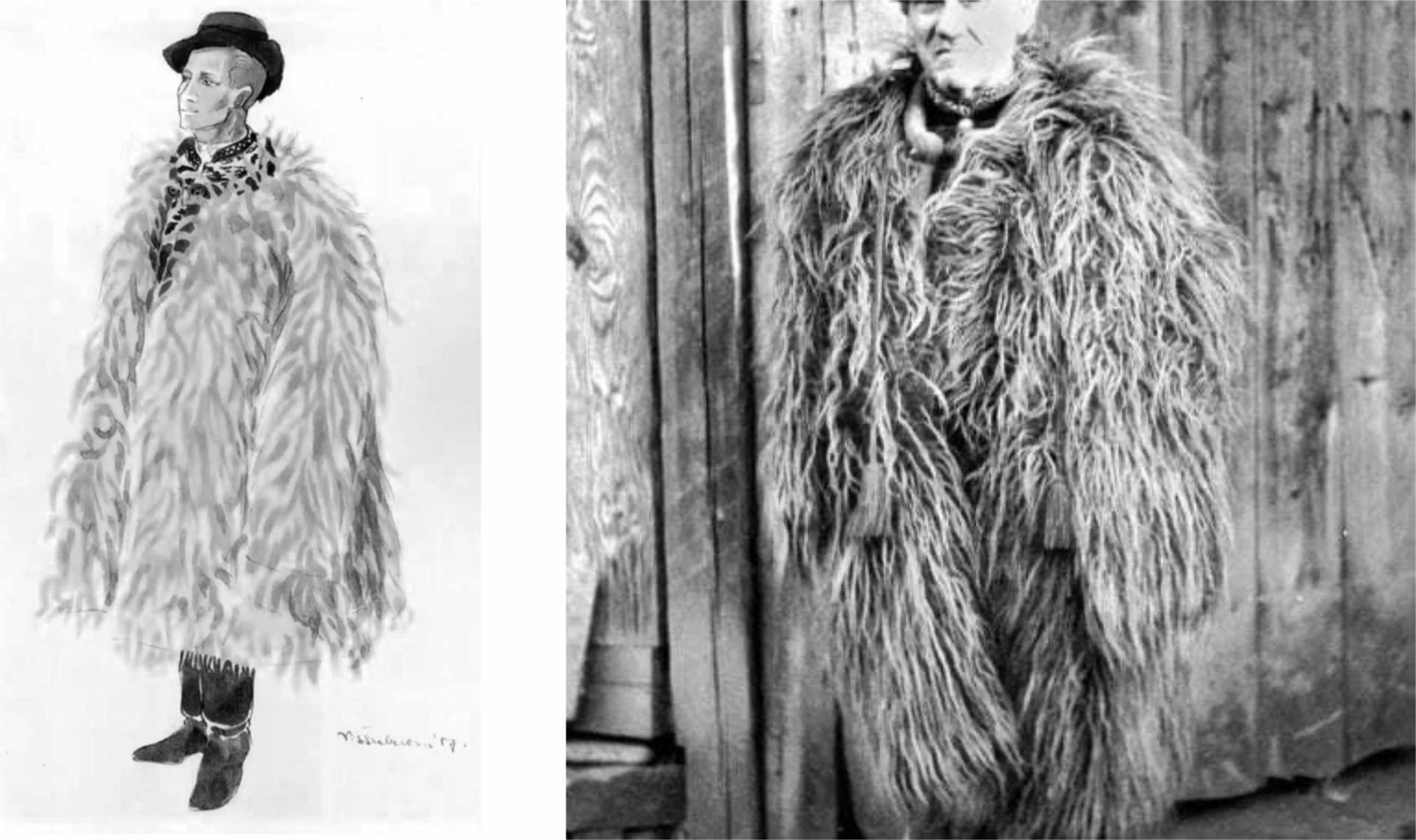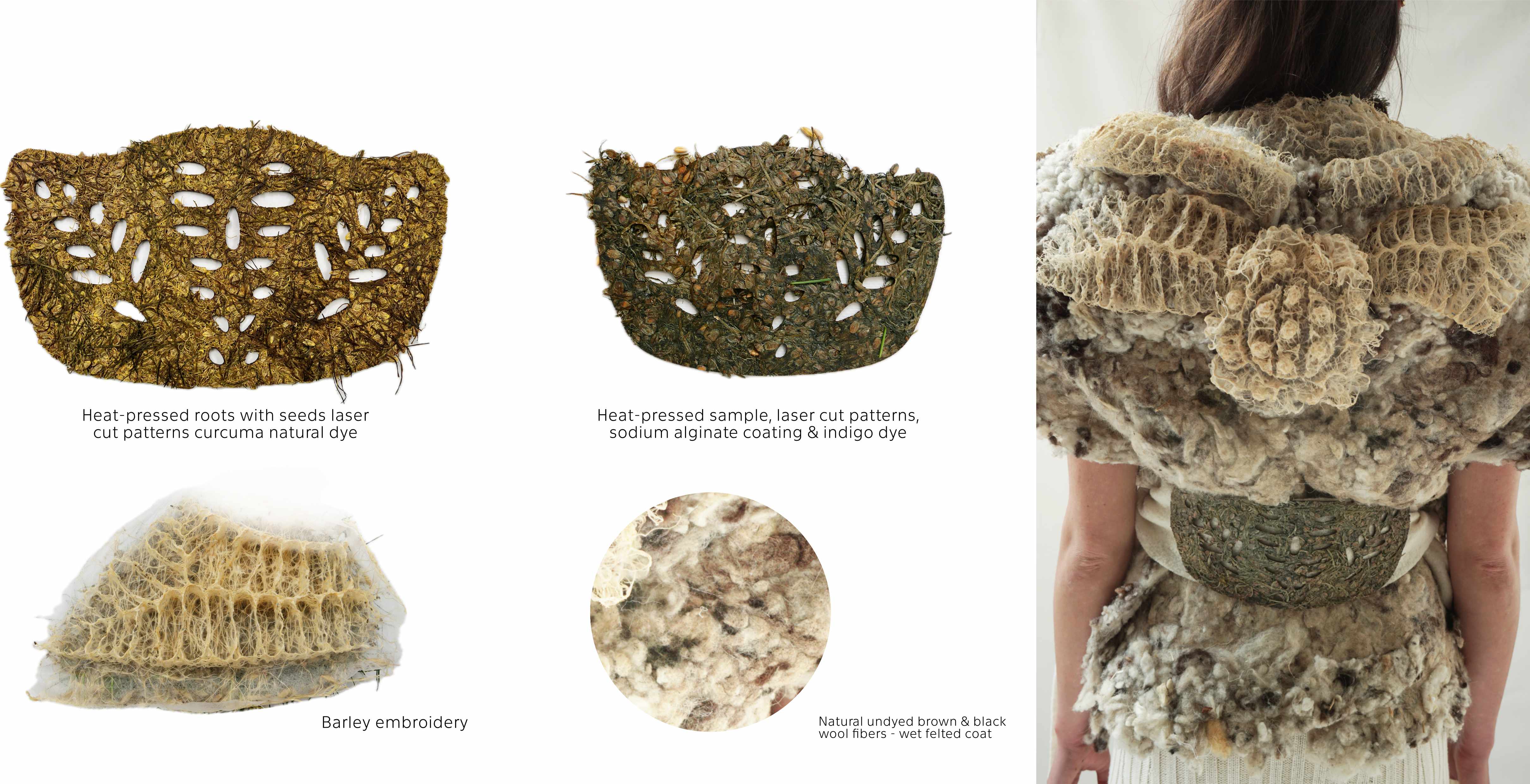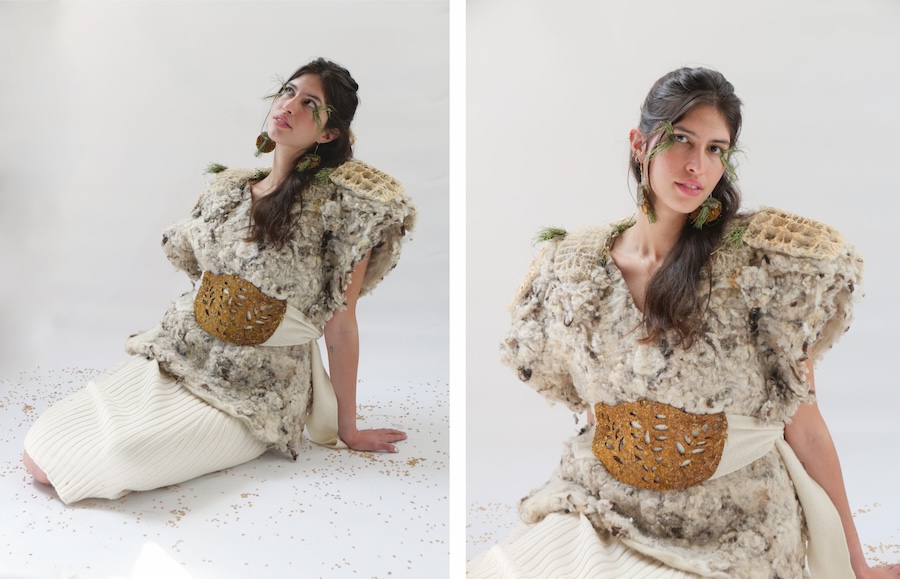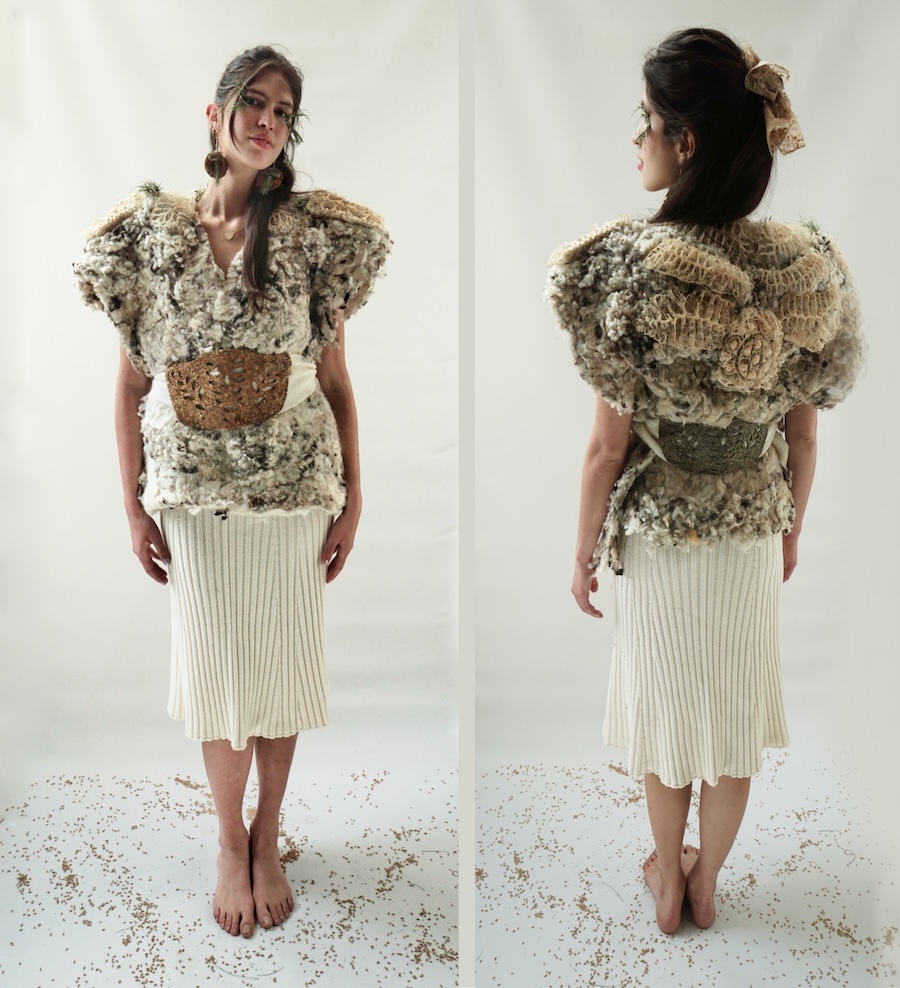GROWING FOLKLORE ELEMENTS¶

AMBER GRAIN EMBROIDERY | Growing folklore elements¶
The final project was the culmination of my research. It is a speculative piece that considers the use of materials in traditional techniques, digital fabrication, and collaboration with nature. It also demonstrates the potential applications in clothing. The project aims to design bio-folklore costumes featuring elements made of wheat and barley roots. Raw wool is used as a binding agent. The root embroideries are complemented by dried grass and pressed material from seeds. The costumes are inspired by traditional Slovak and Czech folklore costumes, symbolizing the importance of grain as a vital source of livelihood and material wealth.
GROWING LACES & EMBROIDERY | Cultural heritage¶
The process of growth and the properties of natural materials inspired me to combine natural energy, modern technology, and cultural heritage. I am originally from Slovakia but currently living in the Czech Republic. Lace-making and embroidery holds a significant place in the traditional folk culture of both countries. I aim to bring a contemporary and distinctive perspective to this traditional technique, which akin to root growth, requires patience, care, and nurturing. Nowadays, we often tend to lack the patience and care needed to achieve our goals. The end product of my work will be root patterns that I can utilize in the traditional use of lace and embroidery in the garment industry.
I aim to bring a contemporary and distinctive perspective to these traditional techniques. I returned to my cultural roots and began researching the elements and essence of traditional folklore costumes.
Cap embroidered with gold thread and beads.


AMBER GRAIN¶
Wheat is also called Amber grain for its golden like colour.
This traditional name also shows the richness of this plant, which offers many possibilities and techniques. It is a "rich" plant.
Dožínky - Slavic harvest festival celebrated at the end of the harvest time¶
Harvest used to be a major event of the year in areas where grain cultivation was the main source of livelihood. It was a time when all the grain from the fields had been successfully harvested and stored, and was something to celebrate! The reward and thanks for the months of hard work in the fields was the harvest festival. This was a celebration of the end of the harvest, complete with revelry, at which the family rejoiced at the expense of the farmer. The celebration began with the last sheaf being taken from the field.
- In my project I use wheatgrass & barley which is one of the main sources of livelihood.

Harvest wreath The preparation started about a week before the harvest festival, when the girls started to knit the wreath from the ears of grains. They used all kinds of cultivated grain and very often wove in meadow flowers, especially red poppies, blue cornflowers, cranberries and poppies, sometimes adding ribbons, straw ornaments, but also bread and cakes. The basic type was the so-called harvest sun - the ears of corn were braided in a ray-like pattern from the centre until they formed a dense circle. In the centre it was reinforced with a small wreath of grain.
Richly decorated costumes are also connected with the celebration of the harvest festival.
TRADITIONAL SLAVIC COSTUME¶
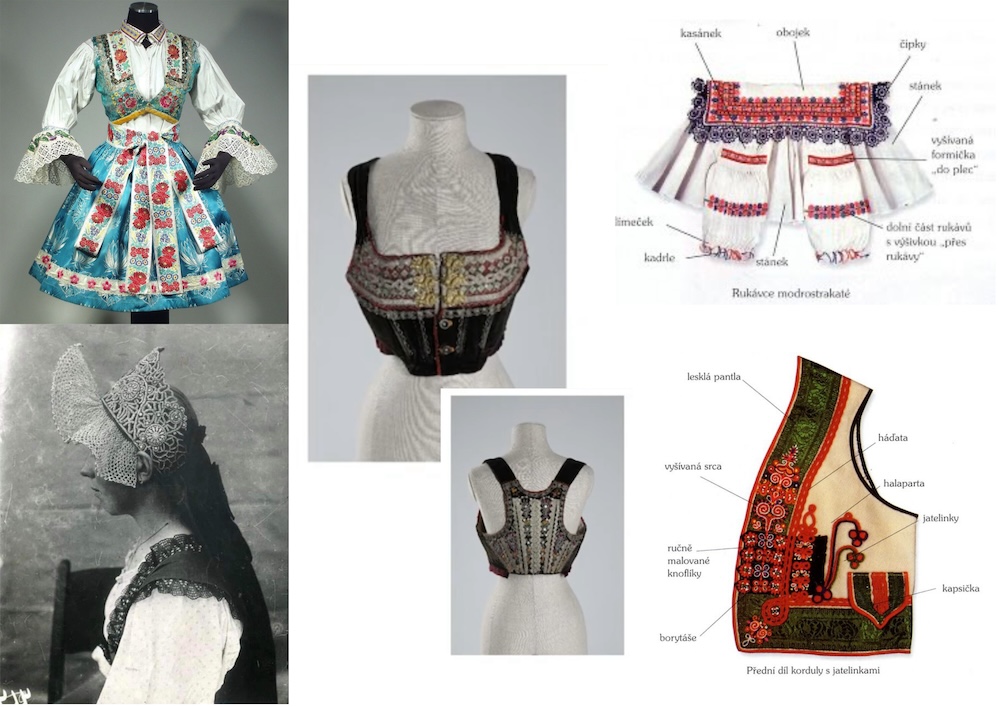

TRADITION | TECHNOLOGY | NATURE¶
Lace-making and embroidery have a significant place in the traditional folk culture of both countries. My goal is to bring a contemporary and distinctive perspective to these traditional techniques. These techniques require patience, care, and nurturing, similar to root growth. Unfortunately, nowadays, we often lack the patience and care needed to achieve our goals. I returned to my cultural roots and began researching the elements and essence of traditional folklore costumes.
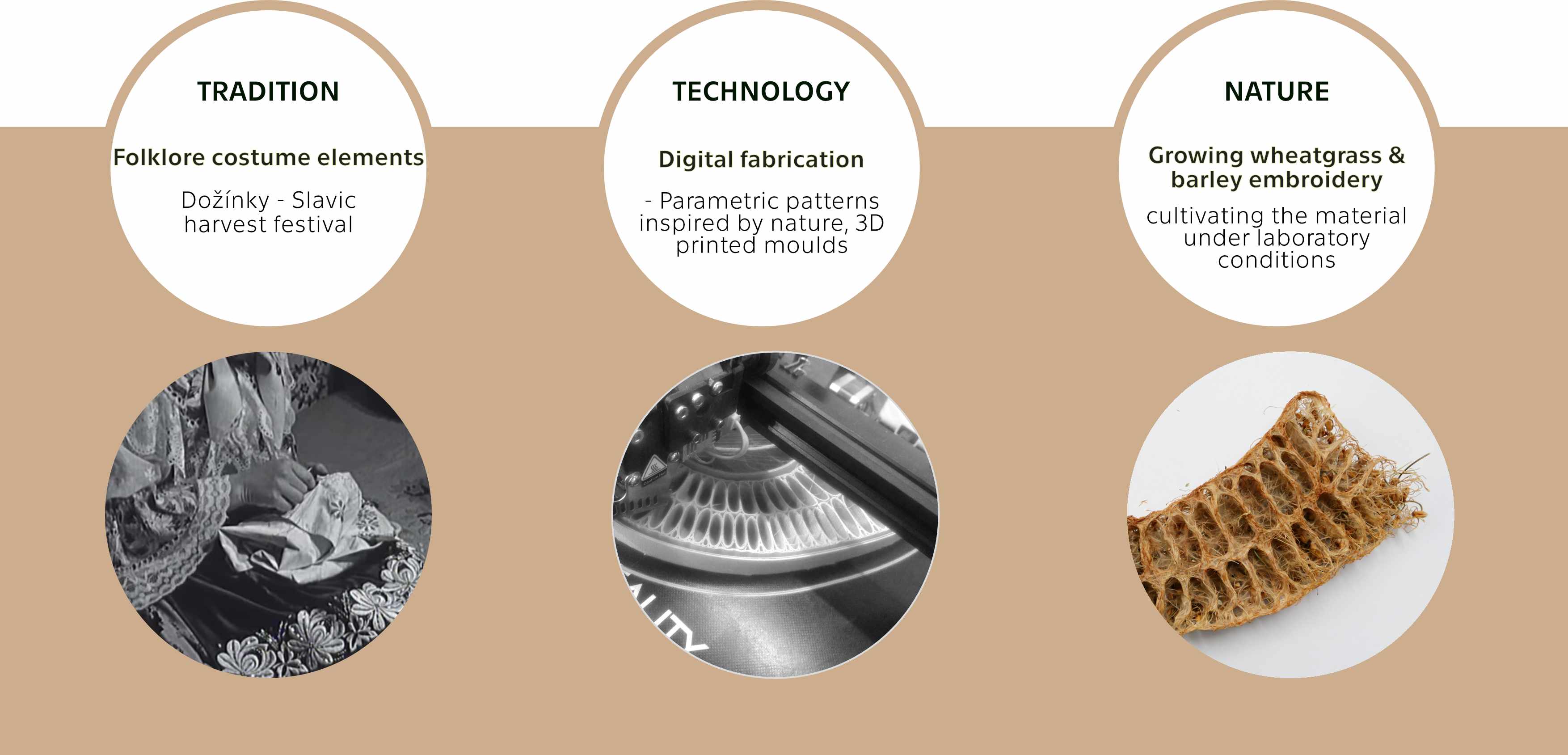
While exploring the material, I was reminded of the lace and embroidery techniques used in traditional Slovakian folk costumes. By utilizing root structures in the context of Slovakian folk costume, I was able to blend history and culture with modern technology and nature.

INSPIRATION | Festive folk costumes¶
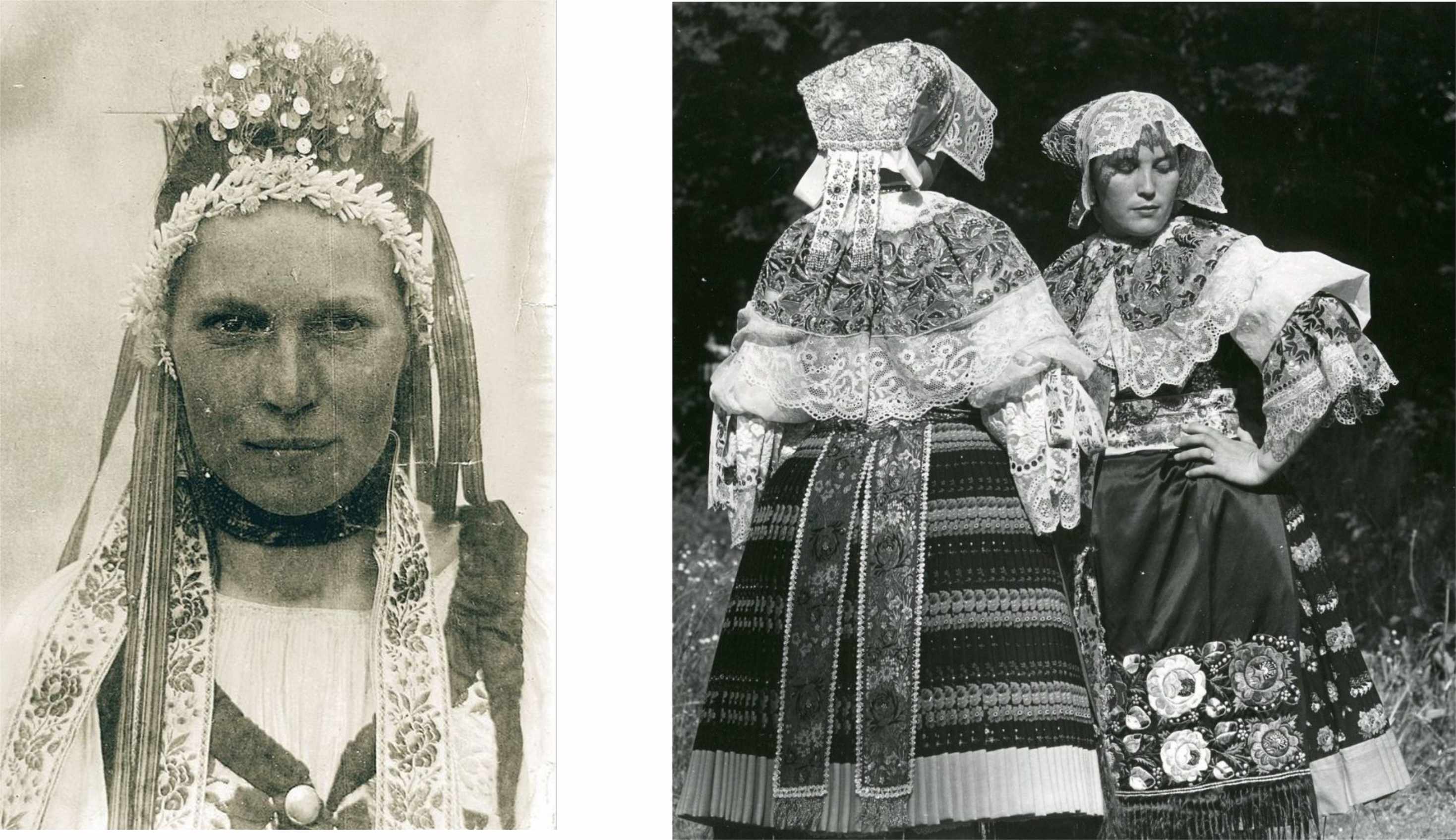

SKETCHES OF THE FINAL COSTUME¶
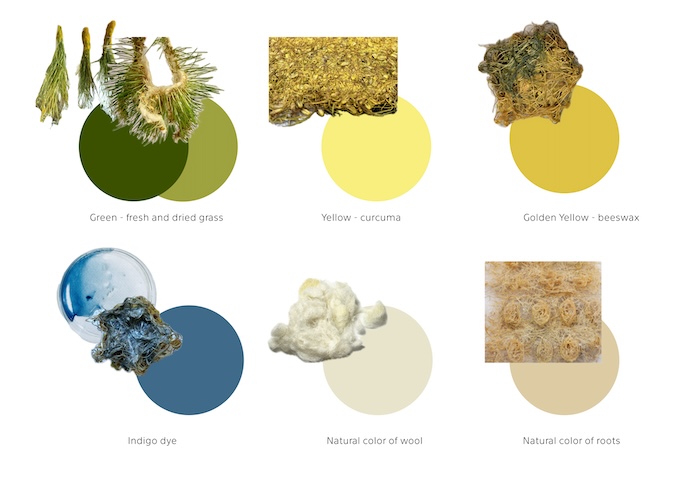
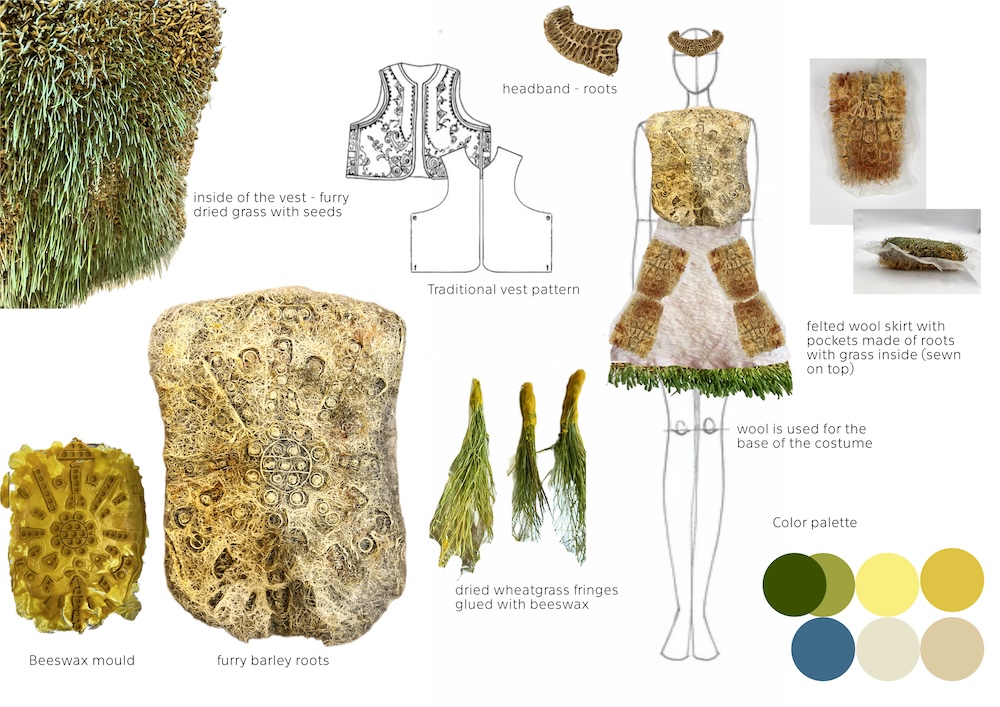
AMBER GRAIN COSTUME | Materials, details¶


SKIRT | Decorated double layer wool fabric skirt¶
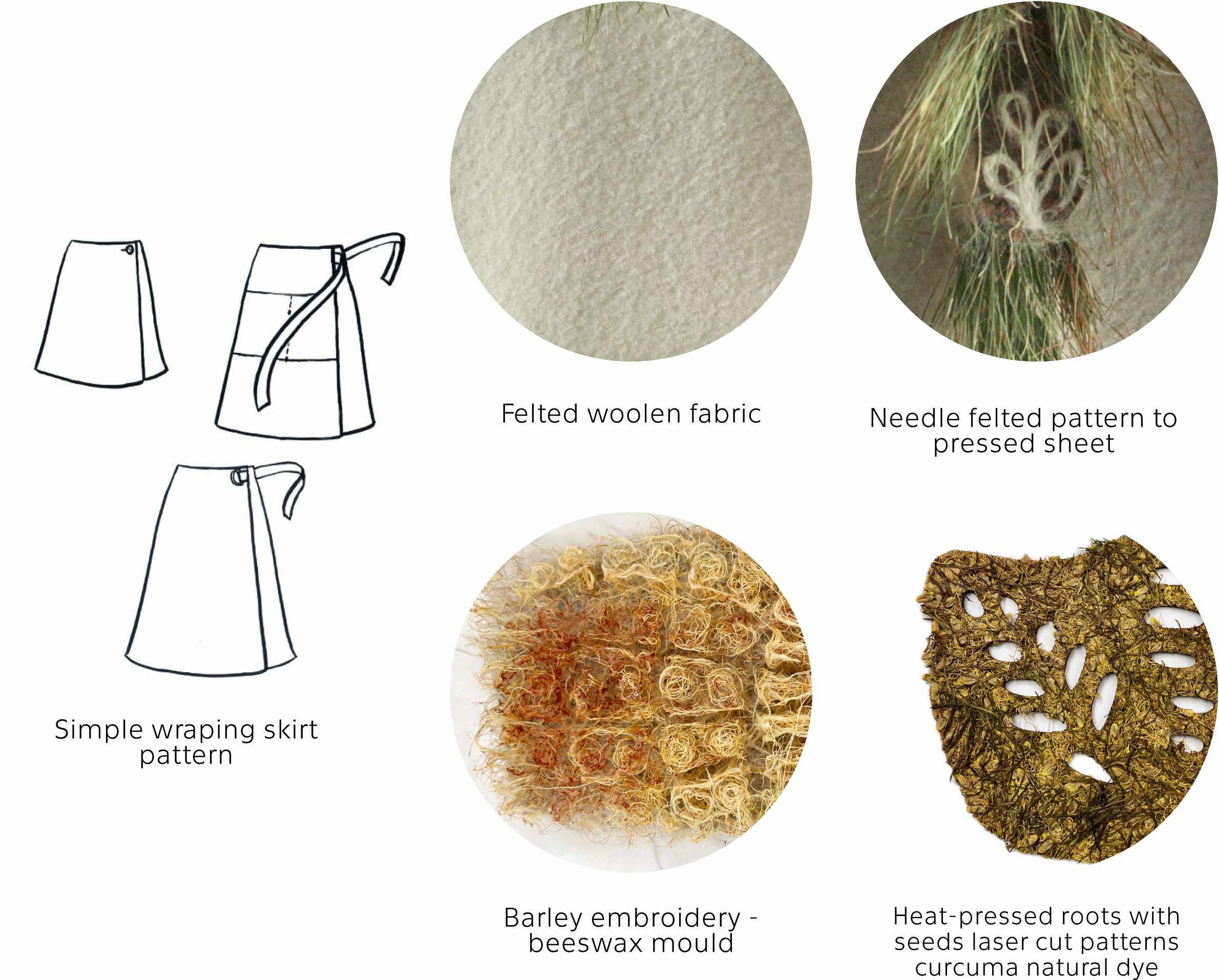


CROWN | Wheatgrass crown with felted wool base¶

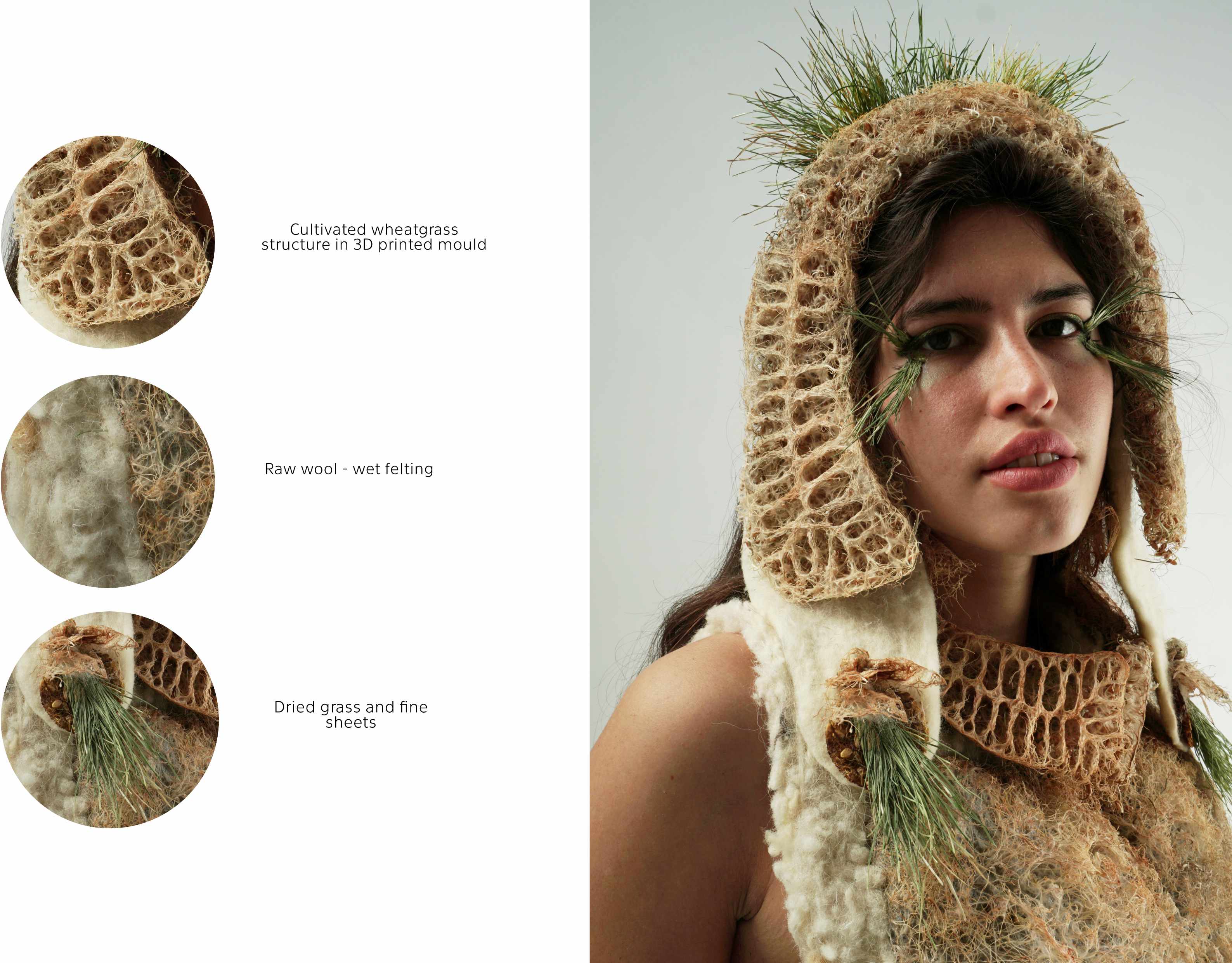
SANDALS | Felted wool sandals with Barley embroidery¶
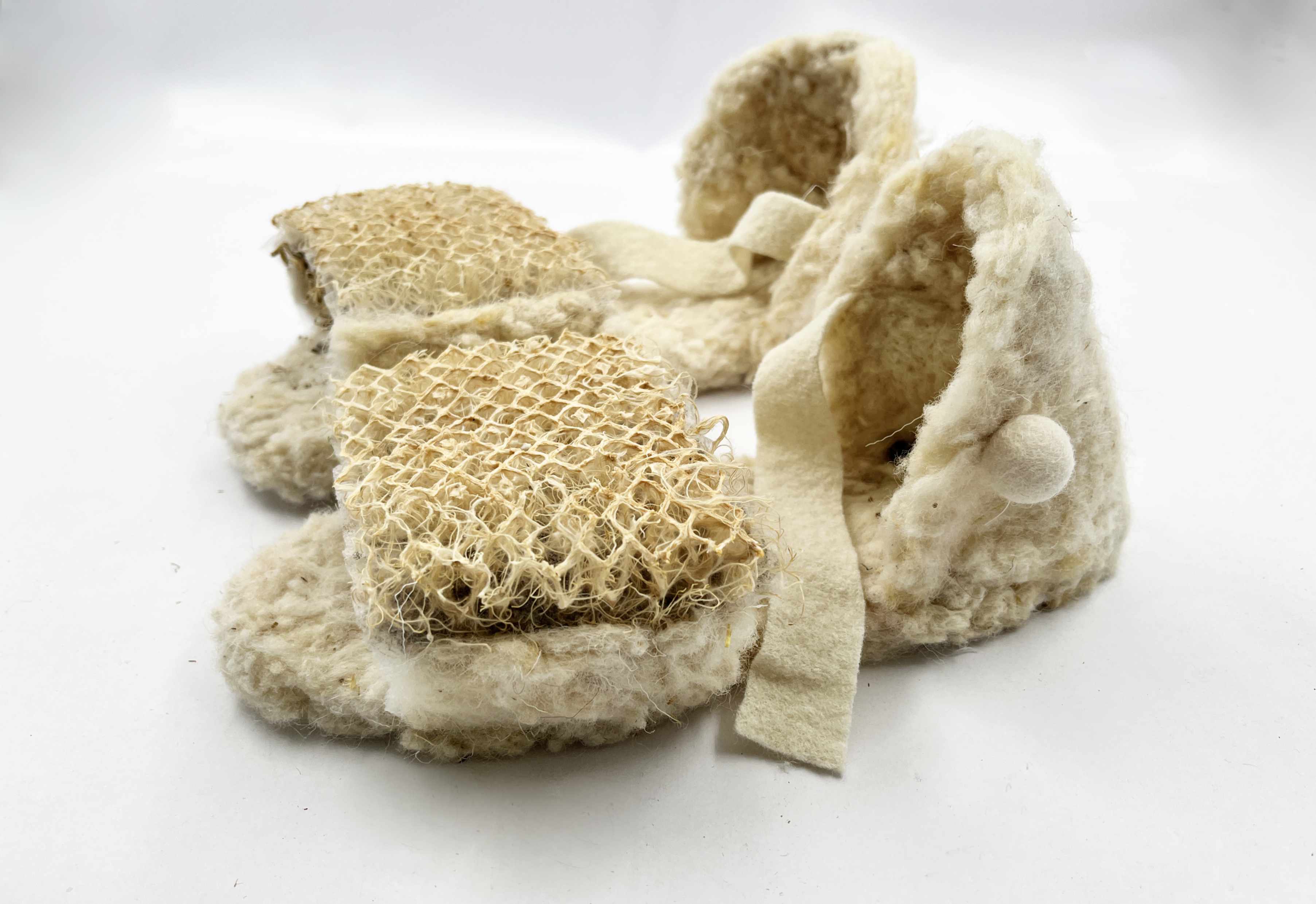
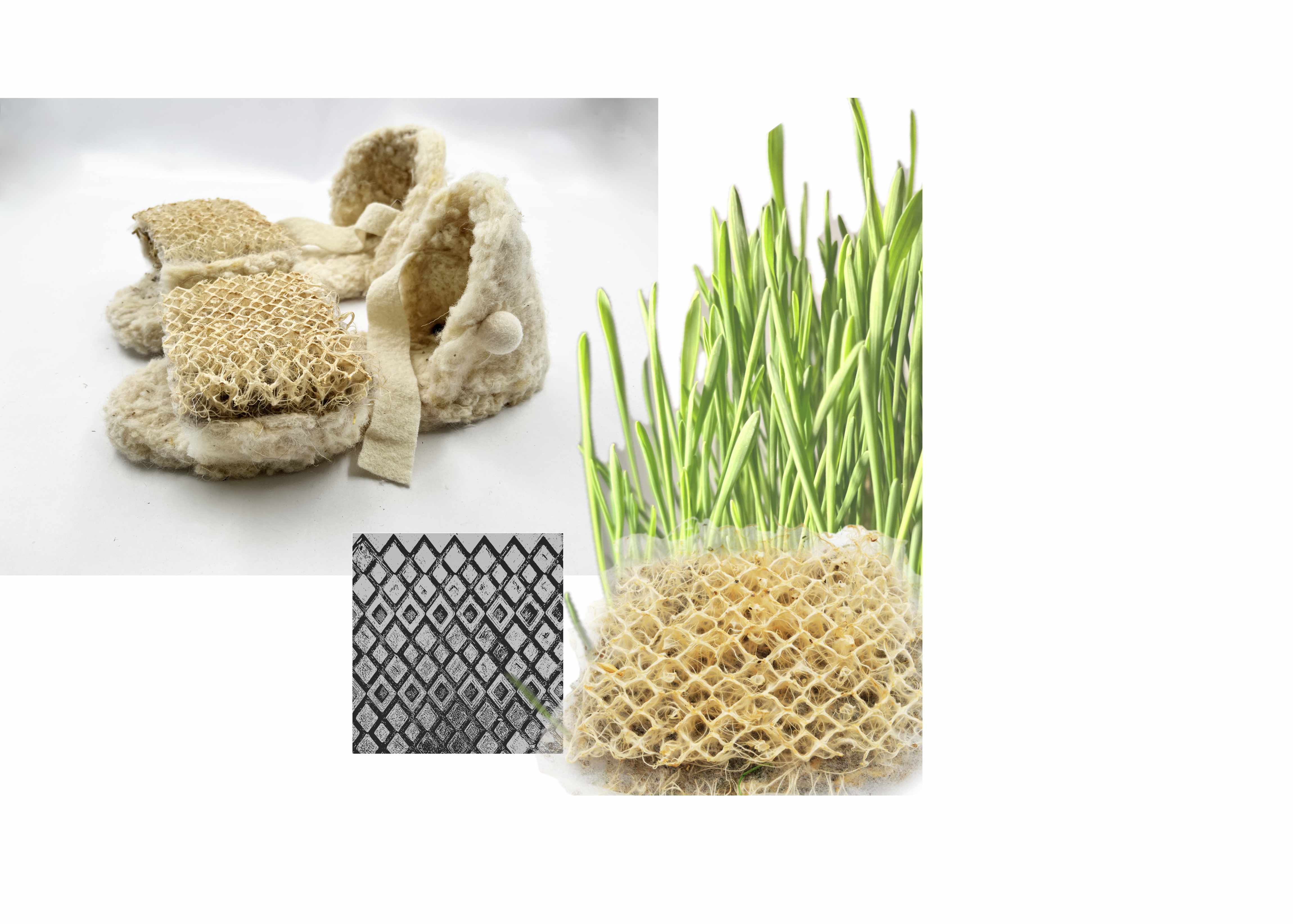
GUBA | Traditional coat of woolen fabric worn in eastern Slovakia¶
The guba is a type of outerwear made of woolen fabric with a long pile on the surface, mostly worn by men but sometimes by women. It has a simple straight cut with a cross seam at the chest, reaching below the waist, and sometimes below the knees. The guba is draped over the shoulders and tied with a pair of woolen cords below the neck. The neckline is roughly lined with red stitching. It is more commonly found in white, but can occasionally be found in darker colors. The guba was traditionally worn in eastern Slovakia as part of everyday and festive winter clothing. It used to be a compulsory garment for the groom until the beginning of the 20th century.
